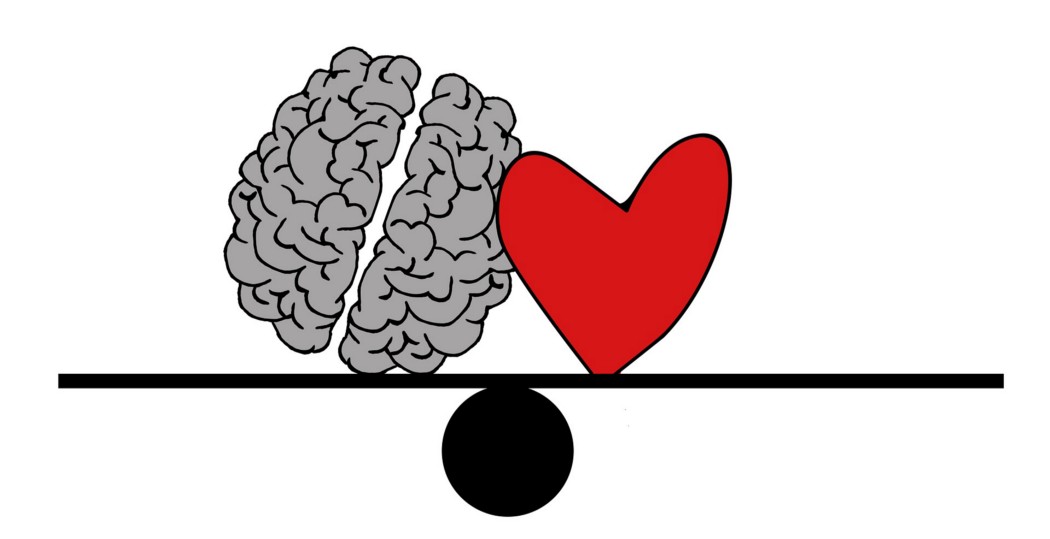
I felt as if I was approaching my career in inclusion and diversity all wrong.
Just like the practice of Inclusion and diversity, my career has been marked by a pull between the head and the heart. Inclusion and diversity (I & D) will have to evolve to find a way to integrate the head — data and science — and the heart — dialogue and empathy-building.
Reconciling two contrasting ideas is something I’ve gotten used to on several fronts. I’m multiracial — Mexican and Native-American on my dad’s side and White European on my mom’s. I’m both a social psychologist and a business consultant. I’m obsessed with science and data but am also an extrovert who loves connecting with other people.
What I’ve learned is that walking in two worlds has some clear advantages, both for me personally and for businesses who commit to forward-thinking I & D policies that integrate head and heart approaches.
Leaving academia for immediate impact
I began my career as a research scientist on the professorship path, conducting research on inclusive workplaces, belonging, unconscious bias, teamwork and communication. As a research scientist, work was all head, no heart. In fact, professors told me I’d be taken more seriously if I just stuck to the data and didn’t tell my own story of being a woman of color who didn’t always feel a sense of inclusion in science. There was no room for me to express my heartfelt passion for the subject or talk about my personal story. Apparently, doing so would somehow cheapen the science.
Publishing and presenting my research was exciting, but the pace was glacial. I was frustrated that my research might take decades to have an impact in the workplace. But when PhDs like me crossed over into business, I’d hear professors say, “Ah, we lost another one!” as if they’d died. I didn’t want get lost (or die!), I just wanted to build a bridge between all the great insights of science and the impact they could have in business.
So I jumped. I stepped off the academic path and into I & D consulting. But when designing how to actually be an I & D consultant with a scientific approach, I was once again faced with this opposition between head and heart.
Reconciling head and heart in I & D
I found that historically, I & D has been focused on dialoguing about it, which means building empathy and understanding across groups; compliance efforts, which means activities like sensitivity training; and creating support networks, such as employee resource/affinity groups. Unfortunately, despite having decades to make an impact, this “heart” approach didn’t significantly move the needle on actual hiring and retention rates in organizations.
Then, starting in 2014, when the technology industry started to release its workforce demographics, the pendulum swung the other way and we became obsessed with the science and data of I & D: the “head” approach. One good outcome of this shift was that I & D was recognized as a business imperative rather than a nonessential exercise. For example, 69% of executives now rate I & D as an important issue, up 32% from 2014. Rigorous, quantitative research convinced decision-makers that diverse teams are more innovative, thoughtful, and make better decisions. And executives saw evidence that a diverse workforce translates into a competitive advantage and better business results.
However, the continuing problem is this: Even though research shows us we need both the head and the heart to effect real change, many business leaders have yet to hear about or completely accept that approach. Effective I & D consulting can help solve that problem.
Here’s an example: Science has demonstrated that unconscious bias can undermine effective hiring decisions. That’s the head part. What I & D consulting can do is translate the scientific findings into a workplace practice like writing down the criteria for a job before reviewing resumes. That simple change can mitigate the bias. Then, adding the “heart” part means pointing out that storytelling and social connection can build the kind of empathy and understanding that motivates individuals to actually use those tools and strategies in their work.
Achieving measurable business results
An I & D process that integrates head and heart to get results therefore looks like this:
● Build empathy, connection, and understanding — Promote change by educating employees on the science of I & D (head!), but also stress the importance of practices like storytelling (heart!) that can foster empathy and inclusion. Focus not just on diversity in hiring, but also on creating inclusive workplaces where all employees feel like they belong (like they are valued, respected, and fit into the culture).
● Analyze problems using data and science — Use data analytics over the entire employee lifecycle to identify specific challenges, identify growth opportunities, and monitor progress over time.
● Implement evidence-based tools and strategies — Translate the insights of scientific research into an I & D strategy customized to work within each unique organizational culture.
Approaches that blend head and heart are the most effective. I found that out in my personal life, and have seen it work in the business world. While getting that blend right is not always easy, the results prove it’s worth the effort.






